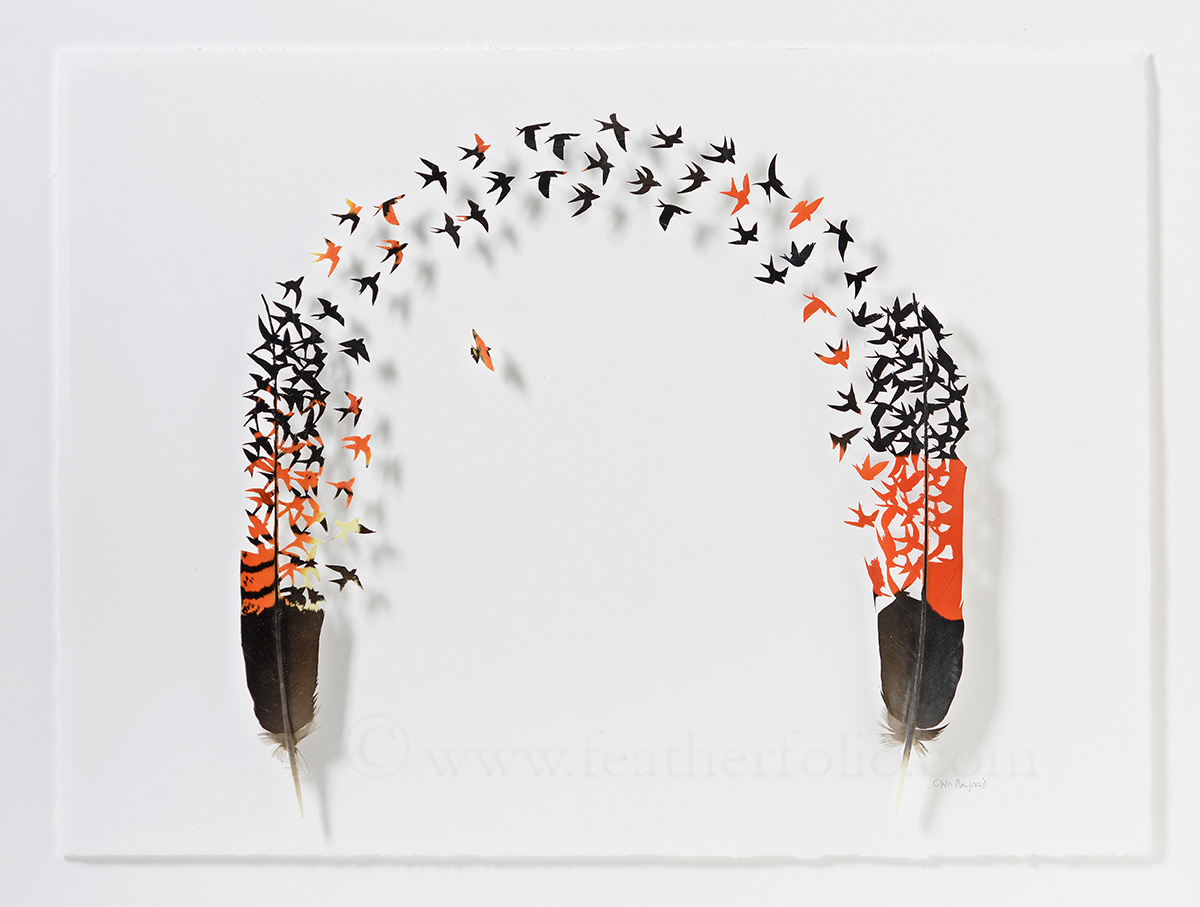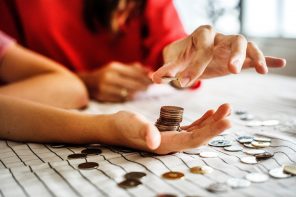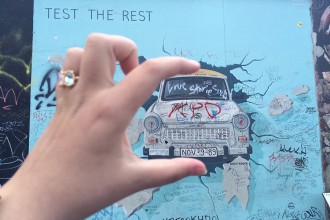“My message is that of beauty and awe. – Chris Maynard”
Chris Maynard believes that beauty lies in the eyes of beholder, but at the same time makes sure that the beauty of the pieces is conformed by the shape and form of the feather itself. He would like to preserve the feather’s original beauty to its maximum extent, but at the same time would like to mend it according to the design and message that it is trying to be put forward.
He is an artist who predominantly works with feathers in an attempt to be a part of this bigger world through a specific object that can convey a lot. Growing up in Seattle, Chris was always surrounded by huge trees and natural sceneries. Therefore, we would like to believe that he draws most of his inspiration from the world around him. With a keen interest in both the natural sciences and the arts, Chris has always tried to bridge the gap between the worlds, so as to improve his quality of art and gather a bigger audience, that his works would invoke a sense of peace and happiness in. He tries to find similarities between man and bird, which he then incorporates into his work so as to connect mankind and make them feel like one entity.
We took the pleasure of asking him a few questions so that both you and I could get to know more about this great artist, his ways of living and producing quality work.
Q. Tell us a little more about yourself! What can we find you doing in your free time?
I treasure my friendships, so if someone wants to visit or do something like birding, dancing, watch a show, or boating, I make the time.
Since I am a professional artist, my time is mine to structure how I see fit. So in a sense, it is all free. I work a lot, mostly because I like making art. In the mornings I do some exercises and go for a short run. I eat simply and so I’ll have say, just yoghurt and blueberries for breakfast. Then it is into the studio for an hour or two, then on the computer for correspondence and business stuff. Lately, for lunch, I go into the garden and pick a few huge lettuce leaves and roll them up with a few things inside like olives and cheese to make a lettuce wrap and balance it with chocolate or chips and maybe a beer. Then off to work for the afternoon and often on into the evenings.
Q.You’re known for your intricate works using feathers in projects like the Cut Feather Shadowbox; what is it about the medium that inspires you?
Any artist is trying to capture something that is an essence of life.
If I am trying to capture the idea of birds in my art expression, it makes sense to work with a material that already carries something of the essence of the birds: their feathers.
Plus feathers are the most complex outer structures of any animal. They are also extremely beautiful and they hold meaning for people around the world: flight, transformation, hope, escape.
Q. Can you tell us about your creative process? What goes on in your mind when you’re making that gorgeous art?
My inspiration comes mostly from three places; 1. The feathers themselves—their shapes and patterns and colours; 2. Watching the birds in the air, on the water or the ground; in cages or free—noticing their habits and behaviours and hearing their songs, and watching them online; 3. Ideas and feelings—like ideas of meaning such as transformation and kinesthetic feelings of movement.
Earlier this morning I had this idea of flight and how when a bird is flying toward me, first it is a tiny dot, then it gets bigger and bigger while moving towards the viewer. My work will be the centre focus of a Museum show this April, on Bainbridge Island near Seattle. In addition to showing my shadowboxes, the curator asked me to think about creating an interactive piece on several large walls. So I am thinking of providing several bucketfuls of all different sizes of different kinds and colours of feathers where people can put them on the wall starting with the smallest sunflower-seed-size feather in a meandering line gradually increasing in size to end at the largest which would be a huge arm-length feather.
People say that some of my pieces have a humorous aspect. Humour must be a deep part of me, so much that I am not really aware of what goes on in my mind when this expression shows itself.
Q. What sources or which people would you cite as your influences or inspirations?
I gain most of my inspiration from the birds and their feathers. Also, neolithic cave painters around the world who seem to come close to capturing the essence of the creatures they were depicting; modern and ancient Zuni and Haida artists; my mother; Sumi and Chinese brushstroke technique where they try to capture the essence of nature in simple brushstrokes; Charlie Harper.
Q. Your book Feathers Form and Function is a holistic introduction to the world of feathers and art combined. Can you tell us about your experiences in the publishing of this book?
The book provides information about feathers and has over 60 images of my art. I wanted to provide a quality book. Though several larger publishers inquired about printing my book, I decided to go with a very small publisher where I had a lot of say over the final design and content. This means that the marketing of the book was also left more with me. So it now on my website (signed), at Amazon (unsigned), my distributor (Taku Graphics), and with galleries that represent my work.
Q. What do you think is the importance of conservation and sustainability in today’s world?
Our environment sustains us, without it, there is no us. End of discussion.
Q. What are some of the things you enjoy aside from your work? Would you rather be dynamic or have complete stability?
Since I am alone in the studio a lot, I enjoy it when my assistants are here. We have meaningful discussions or light talk. I enjoy biking or walking in the woods, swimming in the lakes, dancing, and eating watermelon salad. I find that making my art is stabilizing, calming. I find that presenting it to the world is dynamic. I strive for a balance between these aspects.
Q. You have taken up the task of presenting feathers in an artistic way which is aided by your scientific background. What aspect of your life do you think has made it possible for you to marry the two different approaches to the same subject?
The aspect of my life that most influenced my art is my childhood, specifically my parents. My mother was a professional artist and my father a scientist. I carry both perspectives equally.
Q. Apart from your lovely feather creations, are there other forms of art that you’re interested in experimenting with?
I like feathers in part because they have performed a useful function, are discarded, yet the birds are still alive.
I have used shed snakeskins in several pieces and plan to do more—in combination with feathers. I have also used wasp nests for the background for several pieces. Both are lovely materials and retain something of the essence of their previous owners—snakes and wasps.
I am interested in exploring various mediums –sculpture, painting, large installations, and such. But to be successful, I need to focus just on one thing at a time—feathers. And I find this style of art to be calming and satisfying.
Q. Has your fascination with nature allowed you to travel to different places? Are there any places you wish to travel to in the future?
Though I appreciate travelling to different countries to see varied plants, birds and cultures, I find more and more satisfaction by exploring the small things that surround me. It takes less time to get there, and I enjoy getting to know the area where I live, better. For example, I find more fulfilment by getting to know a particular bird and its habits rather than seeing as many kinds of birds that I can. I am particularly excited about getting to know some “dippers” that live by the river behind my studio. They look like small songbirds and they jump in the fast moving stream and then jump out onto a rock or log as if there was no difference between air and water.
I dearly want to travel “when”, not so much “where”. There are 10,000 species of birds in the world today (which is a lot of different kinds of feathers), but for the last million years or so there have been between 150 thousand and 1.5 million species of birds. That is a lot of kinds of feathers! I want to travel back in time to see them all! [see my blog article for more information on this]
Q. Are you working on any new projects at the moment? What kind of work will we be seeing in the future?
I am finishing a series based on crows/ravens and frogs. I have been inspired to make these pieces by the sounds both creatures make—sometimes crows make little croaking sounds—same as frogs. Making a series of a theme or design allows many ideas of a subject to be expressed. The pieces can be made into different sizes and with varying complexity, making the larger pieces more attractive for larger spaces and smaller pieces more affordable (they start at just under $1000).
Finding creative ideas to make into art comes easily to me so I think I will be satisfied continuing with this kind of work- making shadowboxes.
Q. How would you advise an amateur to start their exploration in feather art?
My only advice is to begin by honouring your materials and their sources.
Don’t ever kill a bird for its feathers! And make sure your sources don’t either.
Q. What can we find you doing on a rainy day?
Creating art. I live in a cloudy place. I treasure cloudy and darker winter days because I don’t feel compelled by beautiful weather to be outside so I spend more time in my studio. In two years, I plan to do some sort of an art residency for a month during the middle of the winter somewhere near the arctic circle like Fairbanks, Alaska. It is dark 23 hours of the day.
Q. What are the three things you want to scratch off your bucket list as soon as possible?
1. An art residency near the Arctic Circle (call me crazy but I explain it above).
2. I will be doing an art residency this April in Monteverde, Costa Rica. Look me up if you happen to be there. It will be the height of the birding season. My website venues page will have more information as the time gets closer.
3. Replace the roof of my house, scheduled for later this month before the rains come.
Q. What’s your favourite beverage?
Not really a beverage but very thirst-quenching: watermelon cut up with peppermint leaves.
That’s it folks! I hope this has managed to tingle your senses and inspired you to give feather art a go! It may definitely look time-consuming. But what isn’t! It seems worth the patience when that overwhelming feeling washes over you, and a wonderful piece of work presents itself in front of you! So go exercise that creative nerve and let’s revolutionise our ‘art world’ together as a team! You can read more about Chris and his masterpieces here on his website.



















